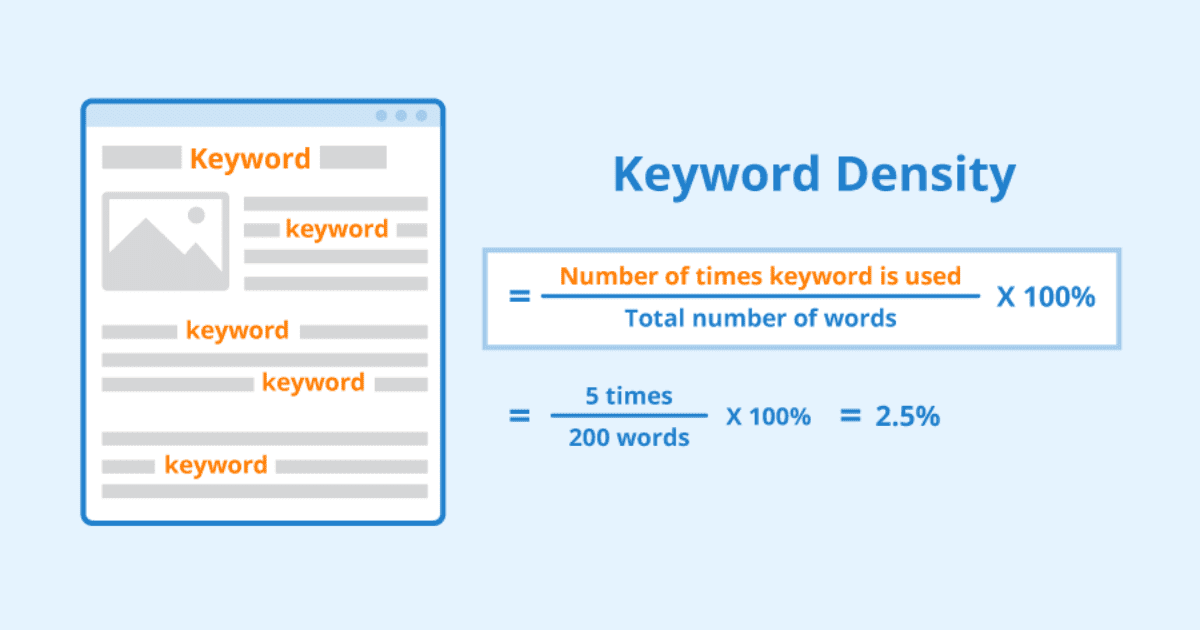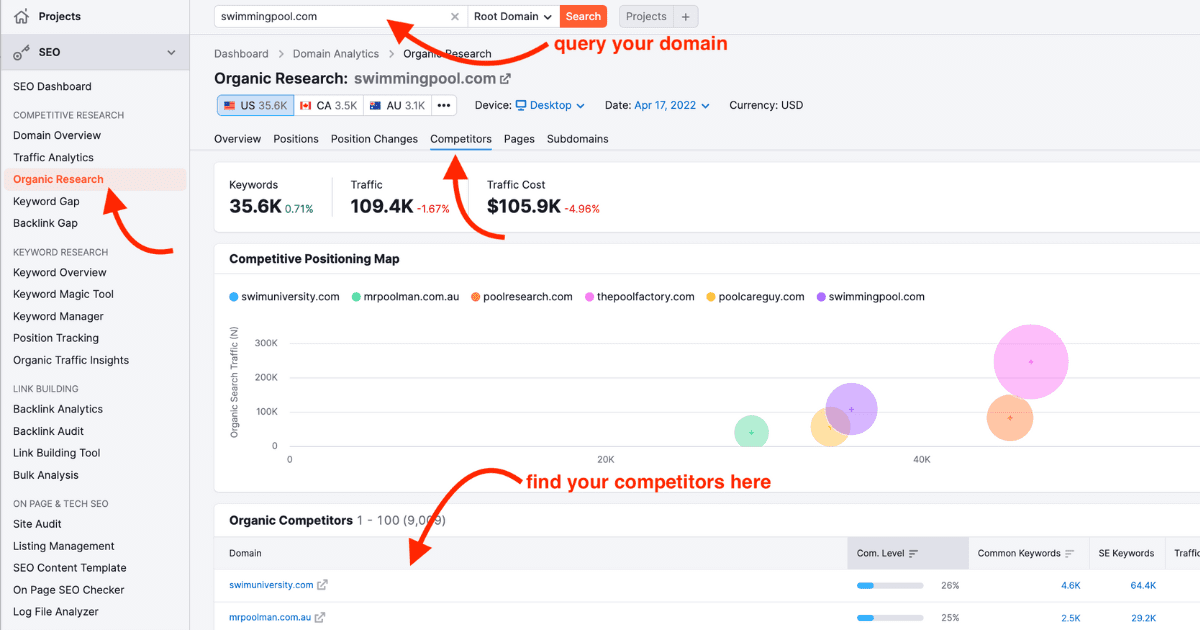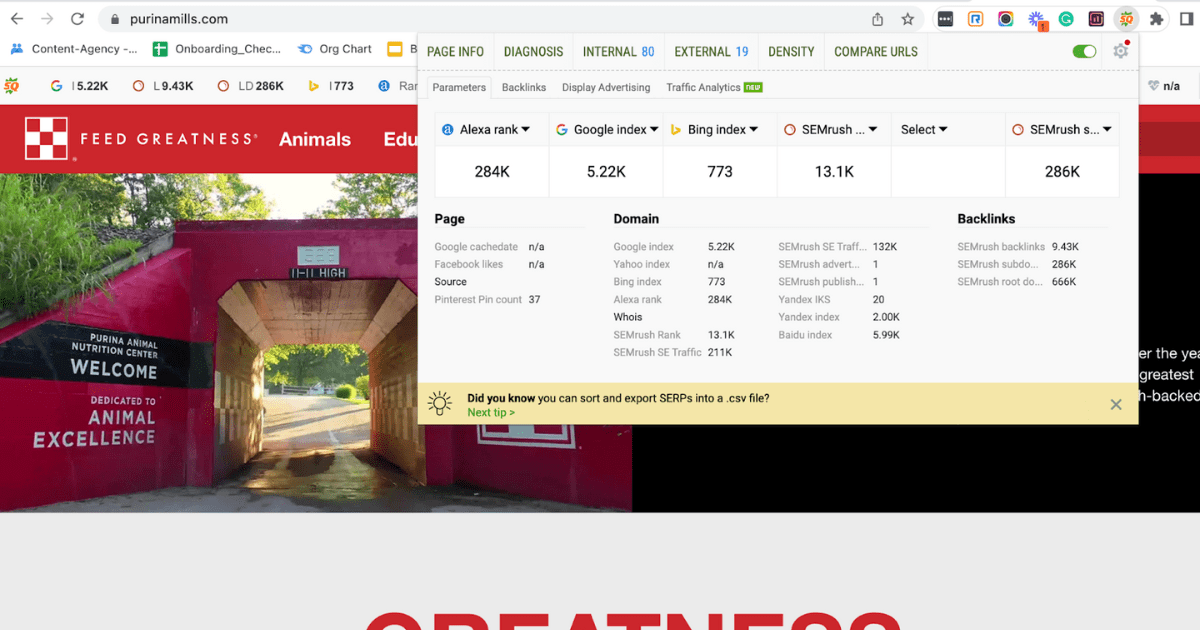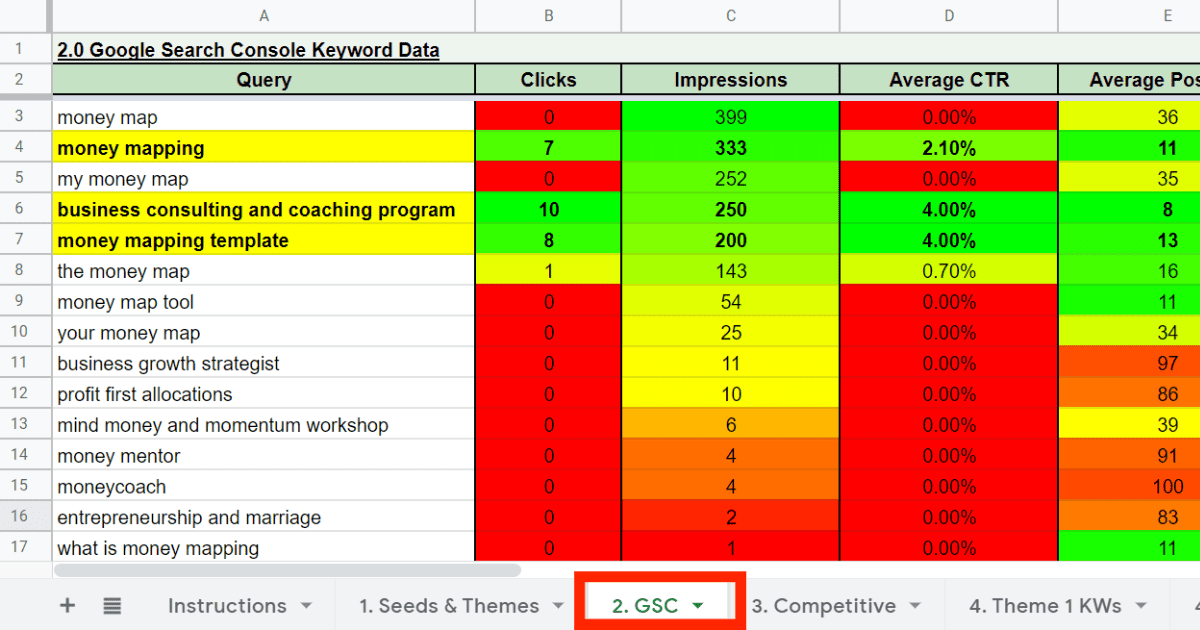Understanding how to search for keywords on a website has become vital for any business aspiring for online success. This comprehensive guide provides actionable insights into the process of website keyword research—a crucial aspect that drives traffic, enhances visibility, and potentially increases revenue.
We’ll explore many strategies, from leveraging your website’s internal search bar to analyzing meta tags, examining headers, and comparing your keyword usage with competitors. By the end, you’ll be equipped to set a target keyword list to optimize your SEO decisions and content strategy effectively.

1) Leveraging the Website’s Internal Search Bar for Keyword Insights
The website search bar is a goldmine for keyword research. It helps you identify what your audience is searching for on your site and provides valuable insights into their preferences and interests. By taking note of the most popular queries, you can uncover potential keywords that can be strategically incorporated into your content strategy.
Analyzing these searches allows you to go further and identify the main keywords and phrases most relevant to your audience.
This deeper understanding of their search behavior can inform your content creation and optimization efforts, helping you tailor your website to better meet their needs and expectations. Embracing these insights can ultimately lead to improved visibility, increased engagement, and higher conversions.

2) Analyzing Meta Tags and Title Tags for Targeted Keywords
Spotting Explicit Keyword Usage
Meta tags and title tags are often overlooked treasure troves of keyword information. These HTML elements provide a snapshot of a page’s content, making them valuable resources for identifying specific keywords. Examining these tags can reveal the targeted keywords for each web page, giving you more keyword ideas for your own content strategy.
Discovering Optimization Opportunities
While meta tags and title tags can help identify existing keywords, they also present opportunities for optimization. If you find that certain keywords are underrepresented in these tags, it may be a sign of room for improvement. Incorporating relevant keywords into these tags can enhance your site’s search engine optimization (SEO), increasing its visibility on search engine results pages (SERPs).
3) Extracting Keyword Data from Visible Content and Page Copy
Analyzing Keyword Frequency and Density
Keyword frequency refers to the number of times a specific keyword appears on a web page. On the other hand, keyword density is the ratio of the occurrence of your keywords to the total number of words within your copy.
Using tools like Google’s Keyword Planner or any other keyword research tool, you can identify the frequency and density of organic keywords and exact match keywords in the visible content and page copy. This helps you understand how to search for keywords on a website but also aids in identifying opportunities for improving your content strategy.
Understanding Contextual Usage of Keywords
Contextual usage of keywords is about how and where the keywords are used within the content. It’s not enough to just include a keyword; it has to be used in a way that makes sense in the given context.
You can gain insights into effective keyword usage by examining web pages and looking at how keywords are naturally incorporated into the copy. This approach can help avoid keyword stuffing, ensuring your content remains engaging and relevant to the user intent.

4) Examining Headers, Subheaders, and Keyword Placement
Enhancing Scannability with Keywords
Headers and subheaders make your content scannable and easy to digest. Including relevant keywords in these sections can enhance their effectiveness and improve your site’s search engine optimization.
By examining the headers and subheaders on a website, you can identify the main keywords and understand how they are strategically placed to capture the reader’s and search engines’ attention.
Embracing Synonyms and Semantic Keywords
Synonyms and semantic keywords are vital elements of a robust SEO strategy. They allow you to target a broader range of search terms without resorting to keyword stuffing.
You can identify synonyms and related keywords by examining a website’s headers, subheaders, and overall keyword placement. Incorporating these into your content can help you rank for a wider array of search terms, driving more traffic to your site.

5) Assessing Image Alt Texts for Keyword Relevance
Importance of Alt Text in SEO Strategy
Alt texts, or alternative texts, are descriptions added to images on a webpage. They’re a fundamental aspect of an effective SEO strategy, crucial in accessibility and search engine optimization. When assessing how to search for keywords, it’s essential not to overlook alt texts.
Alt texts provide context to search engines, helping them understand an image’s content and purpose. More importantly, they offer an opportunity to incorporate relevant keywords organically, enhancing a webpage’s SEO.
Aligning Alt Text with User Intent
When crafting alt text, it’s important to align with user intent. The alt text should accurately describe the image and relate to the surrounding content. By incorporating exact match keywords or related keywords that align with the search intent, you can improve the relevance of your web pages in the eyes of search engines.

6) Checking Keyword Density Across Top Pages
Identifying Top Pages for Keyword Density Analysis
Analyzing keyword density across top-performing pages can provide valuable insights into effective keyword usage. By selecting the most visited or highest-ranking pages on a website, you can see how keywords are used in successful content and replicate that strategy on your own.
Using Keyword Density to Improve Content Strategy
By examining the keyword density of top-performing pages, you can identify opportunities to incorporate more or different keywords into your content. This approach can help you target a wider range of search terms and improve your site’s overall SEO.
Additionally, it can provide inspiration for creating new, high-quality content that resonates with your audience and addresses their needs effectively. Analyzing keyword density across top pages allows you to optimize your content strategy for maximum impact and success. So, it’s crucial to regularly review and adjust your keyword usage based on these insights.
7) Analyzing Low-Traffic Pages for Keyword Optimization
Importance of Analyzing Low-Traffic Pages
While it’s essential to analyze and optimize high-traffic pages, reviewing low-traffic pages is equally important. These pages may have untapped potential and can greatly benefit from keyword optimization.
Analyzing keyword frequency and density on low-traffic pages can help identify opportunities for improvement. By incorporating relevant keywords and improving their usage, you can improve the visibility of these pages on search engine results pages.
Strategies for Boosting Low-Traffic Pages
To optimize low-traffic pages effectively, consider incorporating long-tail keywords that are highly specific to the content on the page. These types of keywords may have less competition, making it easier for your page to rank higher in search results. You can also include related keywords and synonyms to increase the page’s relevance to a wider range of search terms.
Another strategy is to add internal links from higher-traffic pages to these low-traffic pages. This helps with navigation and improves the authority and visibility of the low-traffic page in the eyes of search engines.
Analyzing and optimizing low-traffic pages can improve your website’s overall SEO and drive more traffic to underperforming pages. It’s an essential aspect of keyword research that should not be overlooked.

8) Comparing Keyword Usage Versus Competitor Websites
Assessing Competitor Ranking for Targeted Terms
Keyword strategy shouldn’t be conducted in isolation. It’s essential to consider your competitors and where they rank for the terms you target. You can identify where competitors rank for specific keywords using keyword research tools. This analysis can help you understand their SEO strategy and identify areas where you can gain a competitive edge.
Addressing Gaps in Keyword Strategy
Comparing your keyword usage to competitor websites also allows you to identify gaps in your keyword strategy. Are there relevant keywords that your competitors are ranking for but you’re not? If so, these represent opportunities for improvement. Addressing these gaps can enhance your SEO strategy, improve your search engine rankings, and increase your organic search traffic.
9) Reviewing URL Structures for Keyword Inclusion
Understanding the Role of URLs in SEO
URLs play a significant role in search engine optimization (SEO). They provide search engines with valuable information about the content of a webpage. An effective URL structure can enhance your website’s visibility in search engine results pages (SERPs) and improve user experience.
Incorporating Keywords into URLs
Incorporating relevant keywords into your URLs can benefit your SEO strategy. When conducting keyword research, identify specific keywords that align with the content on your web pages. Using keyword tools like Google’s Keyword Planner can assist in finding the right keywords to include in your URLs.
By including these keywords naturally and contextually, you can enhance the relevancy of your web pages in the eyes of search engines. Remember, however, to avoid keyword stuffing in URLs, they should be clear, concise, and accurately represent the page content.
Exact match/partial match URLs
Exact match and partial match URLs contain keywords that exactly or partially match the targeted keyword. While they can provide a slight SEO boost, it’s important to prioritize user experience when creating URLs. If an exact or partial match keyword doesn’t fit naturally into the URL, it’s best to use a different variation or alternative keyword.

10) Using Browser Extensions or Plugins for On-site Keyword Analysis
Exploring Browser Extensions for SEO
Various browser extensions and plugins can facilitate on-site keyword analysis. These tools can help you identify keywords on a website, assess keyword density, and even uncover keywords you might have overlooked.
Extensions like SEOquake for Google Chrome offer detailed data on keyword usage, allowing you to conduct comprehensive keyword research and refine your SEO strategy.
Enhancing Keyword Analysis with Plugins
Plugins like Yoast SEO can further enhance your on-site keyword analysis. These tools help you identify keywords and provide insights into keyword density, readability, and other critical SEO factors.
11) Employing Search Engine Tools for In-depth Keyword Research
Leveraging Google Keyword Planner
One of the most powerful and widely used tools for conducting keyword research is Google Keyword Planner. As a free tool in the Google Ads suite, it offers invaluable assistance in discovering new, relevant keywords closely associated with your content.
By providing insights into search volume and competitiveness, Google Keyword Planner equips you with the necessary information to find the keywords for your SEO strategy.
With its user-friendly interface and comprehensive data, this tool empowers you to optimize your online presence and drive targeted traffic to your website. Whether you are a beginner or an experienced marketer, Google Keyword Planner is an indispensable resource for enhancing your keyword research efforts and maximizing the effectiveness of your content.
Using Google Search Console for Searcher Behavior Insights
Google Search Console is an indispensable tool that should definitely be a part of your keyword research arsenal. It provides valuable data on how users discover and engage with your website and offers insightful analysis to help you understand searcher behavior.
By delving into this data, you can better understand the specific search terms that drive traffic to your site, enabling you to identify optimization opportunities and enhance your overall website performance.

12) Setting a Target Keyword List
Categorizing Keywords: Head, Body, Long Tail
As part of your comprehensive keyword strategy, it is crucial to categorize your keywords into three distinct categories: head, body, and long tail. Head keywords, often consisting of single-word terms, boast high search volume but are accompanied by fierce competition.
On the other hand, body keywords are composed of 2-3 word phrases, striking a balance between search volume and competition.
Lastly, long-tail keywords, comprising longer phrases, exhibit lower search volume and less competition, rendering them perfectly suited for targeting niche topics or specific audiences. By carefully organizing your keywords into these categories, you can optimize your search engine visibility and effectively reach your target audience.
Prioritizing High-Potential Terms
Once you’ve categorized your keywords based on relevance and intent, it’s important to prioritize those with the highest potential to maximize your SEO efforts.
High-potential keywords are the ones that combine high search volume and low competition. These are the terms that your target audience is actively searching for and that your competitors might not be effectively targeting.
Focusing on these keywords can drive significant organic traffic to your website and improve your search engine rankings, ultimately increasing your online visibility and attracting more potential customers. So, take the time to identify and optimize for these high-potential keywords to make the most out of your SEO strategy.
13) Employing Google Search Operators to Refine Keyword Research
Google search operators are powerful tools that help research keywords and identify valuable optimization opportunities. They enable you to conduct advanced searches and filter results based on specific criteria, enabling you to uncover hidden insights and refine your SEO strategy.
For example, the “site:” operator allows you to search for specific keywords or phrases within a single website, giving you an overview of how well a particular keyword performs on that site.
Similarly, the “intitle:” operator allows you to search for keywords within page titles, providing insights into what your competitors focus on in their content.
Conclusion: Maximizing Keyword Research on Websites
Mastering the art of how to search for keywords on a website is critical to maximizing your keyword research. This essential skill will help you uncover your competitors’ terms and phrases, providing valuable insights into their SEO strategies.
You can develop a robust and effective SEO strategy by utilizing the aforementioned strategies, such as categorizing your keywords, prioritizing high-potential terms, and leveraging powerful tools like Google Keyword Planner and Google Search Console.
Remember, successful keyword research is not just about identifying keywords; it’s about understanding the needs and language of your audience, optimizing your content accordingly, and continuously adapting to the evolving search landscape.







